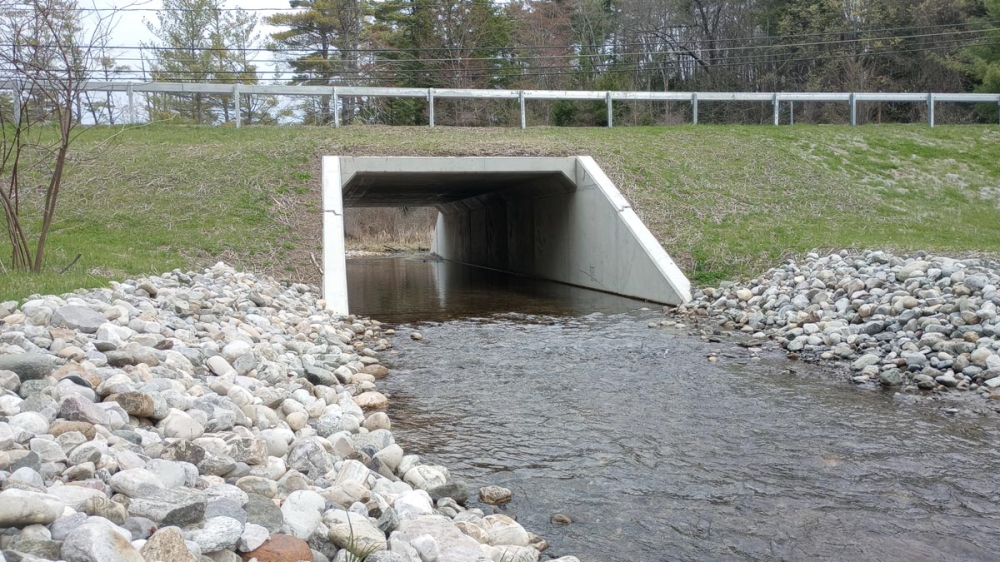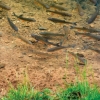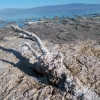
Upgrading stormwater infrastructure is a pressing priority for municipalities across the country, yet it often comes with a hefty price tag. Whether addressing outdated culverts, installing green infrastructure, or improving data management and compliance under an MS4 permit, funding is frequently the largest hurdle to progress. Fortunately, a wide range of grants are available at the federal, state, and even regional levels to support stormwater infrastructure improvements, if you know where to look and how to apply.
Stormwater systems are vital to protecting property, roadways, and water quality. Inadequate or aging infrastructure can lead to flooding, stream erosion, and pollutant discharges into rivers, lakes, and coastal waters. Yet many stormwater systems were built decades ago and are undersized or degraded. Recent climate shifts have increased the frequency of high-intensity rainfall events, placing additional stress on drainage systems not designed for today’s runoff volumes.
Federal Grants
Clean Water State Revolving Fund (CWSRF): This is the primary federal program for funding stormwater and wastewater projects. While technically a low-interest loan program, many states offer principal forgiveness components for green infrastructure or disadvantaged communities.
EPA Section 319 Nonpoint Source Management Grants: These grants focus on reducing pollutants from nonpoint sources such as urban runoff. They can support planning, public outreach, and implementation projects that include stormwater controls.
FEMA Building Resilient Infrastructure and Communities (BRIC): This grant program supports hazard mitigation activities. Stormwater improvements that reduce flood risk can qualify, especially when paired with hazard mitigation plans.
State-Level Stormwater Grants
Every state administers its own water infrastructure grants, often using CWSRF allocations or general funds. For example:
New York: The Environmental Facilities Corporation (EFC) offers the Green Innovation Grant Program (GIGP).
California: State Water Resources Control Board issues Stormwater Grant Program funds under Prop 1.
Massachusetts: The Municipal Vulnerability Preparedness (MVP) Program supports nature-based stormwater resilience projects.
Regional and Watershed-Based Funding
Local watershed councils, conservation districts, and interstate river compacts may offer targeted funding or partner with municipalities to pursue larger grants. These often support projects that reduce sediment, phosphorus, or other pollutants.
Private and Foundation Grants
Some nonprofit organizations and philanthropic foundations also offer grants for environmental infrastructure, including stormwater:
The National Fish and Wildlife Foundation (NFWF)
The Surdna Foundation
Local community foundations focused on clean water initiatives
To improve your chances of securing stormwater grants, focus on projects that meet one or more of the following goals:
Water quality improvement (e.g., reducing nutrient or sediment loading)
Flood mitigation and climate resilience
Green infrastructure and low-impact development
Public education and community engagement
Support for disadvantaged or environmental justice communities
Start early: Many programs have pre-application requirements or annual deadlines.
Build partnerships: Collaborate with local environmental groups, engineers, or regional planning agencies.
Have a clear scope: Define measurable outcomes such as gallons of runoff treated or acres of impervious surface mitigated.
Maintain an asset inventory: Asset management software can help track infrastructure and identify priority upgrades.
Use professional assistance: Consider hiring a grant writer or working with a regional planning commission to navigate complex applications.
Stormwater infrastructure is critical to municipal sustainability, yet it rarely receives the attention, or funding, it deserves. With proactive planning and a strong understanding of grant opportunities, local governments can access millions of dollars in support to modernize their systems, meet regulatory obligations, and protect the communities they serve.
 Wetlands are often described as the kidneys of the watershed because they filter, slow, and transform the water that passes through them in ways that …
Wetlands are often described as the kidneys of the watershed because they filter, slow, and transform the water that passes through them in ways that …
 Field inspections of catch basins, manholes, culverts, and outfalls form the foundation of responsible stormwater management. These routine checks giv…
Field inspections of catch basins, manholes, culverts, and outfalls form the foundation of responsible stormwater management. These routine checks giv…
 Habitat disruption around drainage structures is often subtle at first, and many of the earliest signs tend to appear during ordinary field work rathe…
Habitat disruption around drainage structures is often subtle at first, and many of the earliest signs tend to appear during ordinary field work rathe…
 Harmful algal blooms have become one of the most pressing water quality problems in many regions, and their rise has been linked to a complicated blen…
Harmful algal blooms have become one of the most pressing water quality problems in many regions, and their rise has been linked to a complicated blen…
 The Salton Sea is one of California’s most unusual and tragic landscapes, a place shaped by accident, transformed by ambition, and ultimately pu…
The Salton Sea is one of California’s most unusual and tragic landscapes, a place shaped by accident, transformed by ambition, and ultimately pu…
 *The screenshots used in this article are from Roadwurx, an asset management software created for road maintenance departments. Managing a town’…
*The screenshots used in this article are from Roadwurx, an asset management software created for road maintenance departments. Managing a town’…